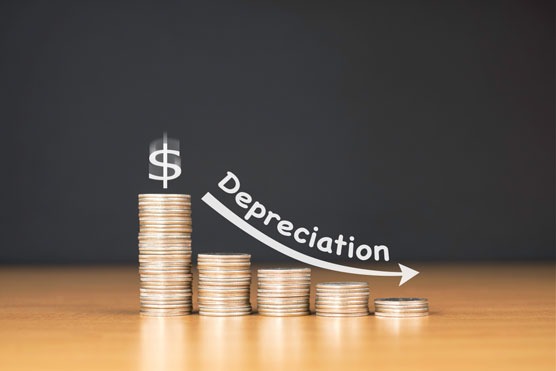What is depreciation, and how is it recorded in bookkeeping?
Depreciation is an accounting method used to allocate the cost of tangible assets (such as buildings, machinery, vehicles) over their estimated useful lives. Since most assets lose value over time due to wear and tear, obsolescence, and other factors, depreciation is used to reflect this decrease in value in the company’s financial records. Depreciation is considered a non-cash expense because it doesn’t involve an actual cash outflow. There are various methods for calculating and recording depreciation, but two common methods are the straight-line method and the declining balance method.
1. Straight-Line Method: This is the simplest and most common method. The cost of the asset is divided by its estimated useful life to calculate the annual depreciation expense. Formula: Annual Depreciation Expense = (Cost of Asset – Residual Value) / Useful Life -Cost of Asset: The original cost of the asset. -Residual Value: The estimated value of the asset at the end of its useful life. -Useful Life: The expected number of years the asset will be used.
2. Declining Balance Method: This method applies a constant percentage to the asset’s book value to calculate the annual depreciation. It results in higher depreciation expenses in the earlier years of the asset’s life and gradually decreases over time. Formula: Annual Depreciation Expense = Book Value at Beginning of Year x Depreciation Rate -Book Value at Beginning of Year: The asset’s value at the start of the accounting period. -Depreciation Rate: A fixed percentage determined by the useful life and desired rate of depreciation. Recording Depreciation in Bookkeeping:
1. Choose the Method: Select the depreciation method that best aligns with your business’s needs and accounting practices.
2. Create an Asset Account: When you acquire a tangible asset, create an asset account for it. This account represents the asset’s original cost.
3. Depreciation Entries: -At the end of each accounting period, make a journal entry to record depreciation. -For the straight-line method, debit the depreciation expense account and credit the accumulated depreciation account. -For the declining balance method, debit the depreciation expense account and credit the accumulated depreciation account.
4. Accumulated Depreciation: The accumulated depreciation account represents the total amount of depreciation accumulated over the asset’s life. It is a contra-asset account and is subtracted from the asset’s original cost to calculate the asset’s net book value.
5. Update Financial Statements: As you record depreciation entries, your financial statements will reflect the reduced value of the asset and the corresponding depreciation expense.
6. Revaluate Residual Value and Useful Life: Regularly assess whether the asset’s useful life and residual value need adjustments based on changing circumstances. Depreciation is an important concept in bookkeeping because it accurately reflects the decreasing value of assets over time.
Properly recording depreciation ensures that your financial statements accurately portray the value of your assets and the corresponding expenses incurred during their use. It’s recommended to work with a professional accountant to determine the most suitable depreciation method for your business and to ensure accurate bookkeeping practices.
Silicon Harbor Business Services is based in Mount Pleasant, SC. We provide solid, practical advice to small business owners and select individuals. We work with Quickbooks Online, Quickbooks Desktop and Quickbooks Enterprise.
For a complete list of our services, please click here. Reach out to our team of Business Consultants at Silicon Harbor Business Services in Mount Pleasant, SC if you have any questions about online bookkeeping or business consultancy. We’d love to hear from you!
